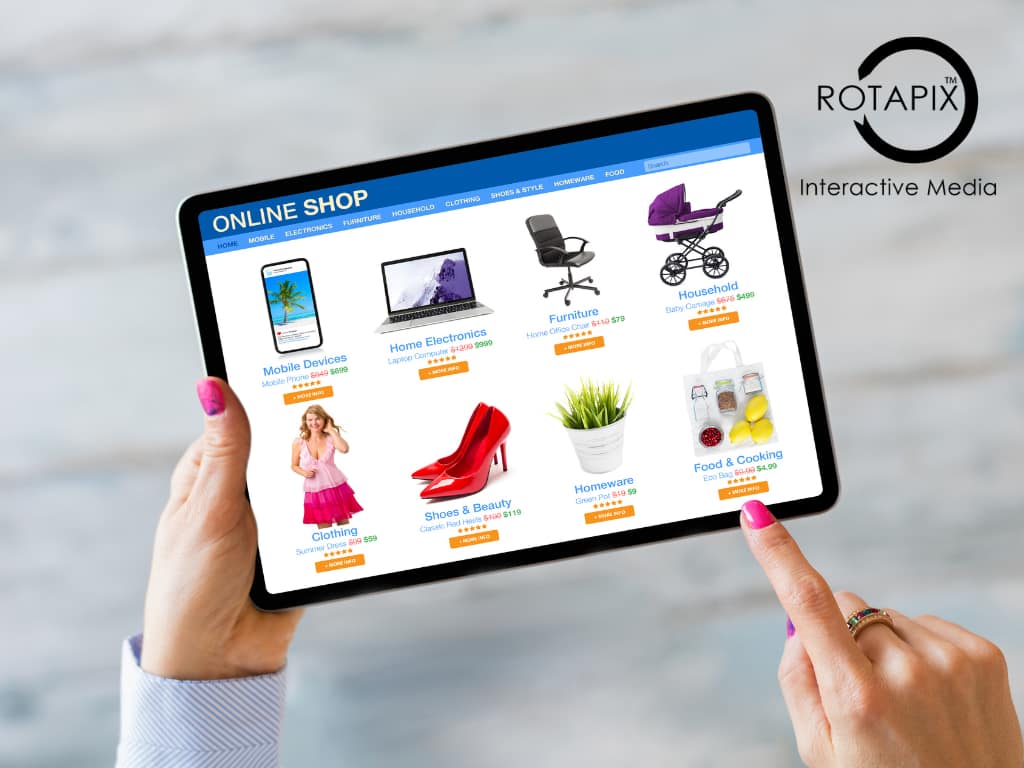When integrating AR into your e-commerce store, choosing the right tools and platforms is crucial. Start by evaluating different AR ecommerce solutions available in the market. Look for platforms that offer robust features, user-friendly interfaces, and reliable customer support. Popular options include ARKit, ARCore, and Vuforia. Consider the compatibility of these tools with your existing systems and their ability to scale as your business grows. Additionally, assess the cost of implementation and any ongoing fees associated with these solutions.
Integrating AR with Existing E-commerce Platforms
Integrating AR technology with your existing e-commerce platform is a vital step. Ensure that the AR tools you select are compatible with your current platform, such as Shopify, Magento, or WooCommerce. This integration should allow for seamless operation without disrupting your existing processes. Work closely with your IT team or a website developer in Sydney to ensure a smooth integration. They can help you address any technical challenges and optimise the performance of your AR e-commerce setup.
Steps to Implement AR in E-commerce

Planning Your AR E-commerce Strategy
Before diving into the technical aspects, develop a comprehensive AR e-commerce strategy. Identify your target audience and determine how AR can enhance their shopping experience. Set clear objectives, such as increasing engagement, boosting sales, or reducing return rates. Outline the specific AR features you want to implement, such as virtual try-ons, 3D product views, or interactive tutorials. This strategic planning will guide your implementation process and ensure that your AR initiatives align with your business goals.
Designing and Developing an Augmented Reality Website
Designing and developing an augmented reality website requires careful planning and expertise. Collaborate with a skilled website developer in Sydney who has experience in AR e-commerce projects. They can help you create an intuitive and visually appealing website that incorporates AR features seamlessly. Focus on user experience by ensuring that the AR elements are easy to access and use. Incorporate responsive design principles to make sure your augmented reality website works well on both desktop and mobile devices.
Finding the Right Website Developer in Sydney for AR E-commerce
Qualities to Look for in a Website Developer Sydney
Finding the right website developer Sydney is crucial for the success of your AR e-commerce project. Look for developers with a strong portfolio of AR-related projects and proven expertise in e-commerce. They should be proficient in the latest AR technologies and have a deep understanding of user experience design. Additionally, effective communication skills and the ability to work collaboratively are essential qualities to ensure that your project runs smoothly and meets your expectations.
Partnering with AR E-commerce Specialists
Partnering with AR e-commerce specialists can provide you with the technical expertise and innovative solutions needed to implement AR effectively. These specialists can offer valuable insights and customised solutions tailored to your specific needs. They can assist with everything from initial planning and design to development and integration. Working with experts ensures that your AR e-commerce project is executed flawlessly, enhancing your customers’ shopping experience and driving business growth.
Testing and Launching Your AR E-commerce Store
Conducting Beta Tests for AR Functionality
Before launching your AR ecommerce store, conducting thorough beta tests is essential to ensure that all features work as intended. Beta testing allows you to identify and fix any issues, ensuring a smooth user experience. Involve a group of users to test the AR functionalities and gather feedback on their experience. Pay close attention to aspects such as loading times, ease of use, and overall performance. Use this feedback to make necessary adjustments and improvements.
Preparing for a Successful AR E-commerce Launch
Preparation is key to a successful AR e-commerce launch. Create a detailed launch plan that includes marketing strategies, customer support plans, and technical support readiness. Ensure that your team is well-trained to handle any customer inquiries related to AR features. Promote your new AR capabilities through various channels, including social media, email campaigns, and your website. Highlight the benefits of your augmented reality website to attract and engage customers. A well-executed launch can significantly enhance your brand’s reputation and drive customer engagement.
Marketing Your AR-Enabled E-commerce Store
Promoting Your Augmented Reality Website
Effectively promoting your augmented reality website is key to attracting and retaining customers. Here are some strategies to consider:
- Content Marketing: Create engaging content that highlights the benefits of your AR features. Blog posts, videos, and social media updates can showcase how AR enhances the shopping experience and differentiates your store from competitors.
- Influencer Partnerships: Collaborate with influencers in your industry to promote your AR-enabled e-commerce store. Influencers can provide authentic reviews and demonstrations of the AR features, reaching a broader audience.
- SEO Strategies: Optimise your website for search engines by incorporating relevant keywords like “AR e-commerce,” “augmented reality website,” and “website developer Sydney” into your content. This helps improve your search engine ranking and drive organic traffic.
Engaging Customers with AR Features
Once visitors land on your site, it’s important to engage them with your AR features effectively:
- Interactive Demos: Provide interactive demos and tutorials to help customers understand how to use the AR features. This can enhance their shopping experience and encourage them to make a purchase.
- Customer Reviews: Encourage customers to leave reviews and share their experiences with the AR features. Positive testimonials can build trust and attract more visitors to your site.
- AR Promotions: Offer exclusive promotions or discounts for customers who use the AR features. This incentivises users to try out the AR functionalities and increases engagement.
Training Your Team to Manage AR E-commerce
Providing AR Training for Staff
Proper training for your staff is essential to ensure they can effectively manage and support your AR e-commerce store. Here are some training strategies:
- Workshops and Seminars: Organise workshops and seminars to educate your staff on the basics of AR technology and how it applies to your e-commerce store. This helps them understand the importance of AR and how to utilise it effectively.
- Hands-On Training: Provide hands-on training sessions where staff can practice using the AR features. This practical experience helps them become more comfortable and proficient with the technology.
- Ongoing Education: Encourage continuous learning by providing access to online courses and resources on AR technology and e-commerce trends. This keeps your team updated with the latest developments and best practices.
Developing AR Support Resources
In addition to training, developing comprehensive support resources can help your team manage the AR e-commerce store efficiently:
- User Manuals: Create detailed user manuals that outline how to use and troubleshoot the AR features. These manuals can serve as a reference for both staff and customers.
- FAQ Sections: Develop a Frequently Asked Questions (FAQ) section on your website to address common queries related to the AR functionalities. This can reduce the workload on your support team and provide quick answers to customers.
- Customer Support Scripts: Provide your customer support team with scripts and guidelines for addressing AR-related inquiries. This ensures consistent and accurate information is provided to customers.
Monitoring and Improving AR Performance in E-commerce
Key Metrics for AR E-commerce Success
To ensure the success of your AR e-commerce store, it’s important to monitor and evaluate key performance metrics:
- User Engagement: Track metrics such as the number of users interacting with the AR features, average time spent on AR functionalities, and repeat usage. High engagement levels indicate that customers find the AR features valuable and enjoyable.
- Conversion Rates: Measure the impact of AR on conversion rates by comparing the sales data before and after implementing AR. Increased conversion rates suggest that AR is effectively enhancing the shopping experience and driving purchases.
- Customer Feedback: Collect feedback from customers regarding their experiences with the AR features. This qualitative data provides insights into areas for improvement and helps you understand customer preferences.
Future Trends in AR E-commerce
Prepare your e-commerce store for future AR developments by adopting a proactive approach:
- Continuous Learning: Stay informed about the latest advancements in AR technology and e-commerce trends. This knowledge allows you to anticipate changes and adapt your strategies accordingly.
- Scalable Solutions: Choose AR tools and platforms that are scalable and flexible, allowing you to easily integrate new features and technologies as they emerge.
- Customer-Centric Approach: Keep your customers at the forefront of your AR initiatives. Continuously gather feedback and make improvements to ensure that your AR features meet their evolving needs and preferences.
Implementing AR in your e-commerce store can significantly enhance the shopping experience, increase customer engagement, and drive sales. By carefully choosing the right AR tools and platforms, planning a comprehensive strategy, and collaborating with experienced website developers in Sydney, you can effectively integrate AR into your e-commerce site.









